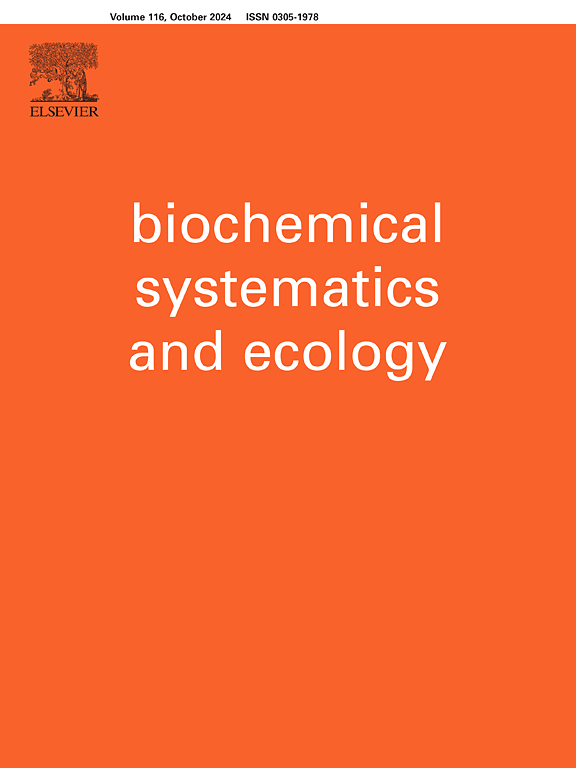Emulsion molecular role and advanced characterization of Ambrosia arborescens miller essential oil
IF 1.4
4区 生物学
Q4 BIOCHEMISTRY & MOLECULAR BIOLOGY
引用次数: 0
Abstract
Throughout history, plants have been used for medicinal and pesticidal purposes due to their bioactive compounds, including alkaloids, oxygenated compounds, and terpene derivatives with antimicrobial properties. This study investigates the chemical composition and biocidal potential of Ambrosia arborescens Miller essential oil, emulsified with dimethyl sulfoxide. Gas Chromatography-Mass Spectrometry (GC-MS) identified 39 components, with sesquiterpenes as the predominant class, including Germacrene D (16.54 %), Santolina triene (14.3 %), Sabinene (12.4 %), Eucarvone (6.7 %), Ar-curcumene (5.17 %), and δ-Cadinol (4.85 %). Infrared (IR) spectroscopy confirmed the presence of sesquiterpenoid rings, cyclopentenes, and cyclodenzynes, structures known for their potential biocidal activity. The findings suggest that A. arborescens essential oil could serve as a natural insecticide, offering an eco-friendly alternative to synthetic pesticides while minimizing environmental impact.
求助全文
约1分钟内获得全文
求助全文
来源期刊

Biochemical Systematics and Ecology
生物-进化生物学
CiteScore
3.00
自引率
12.50%
发文量
147
审稿时长
43 days
期刊介绍:
Biochemical Systematics and Ecology is devoted to the publication of original papers and reviews, both submitted and invited, in two subject areas: I) the application of biochemistry to problems relating to systematic biology of organisms (biochemical systematics); II) the role of biochemistry in interactions between organisms or between an organism and its environment (biochemical ecology).
In the Biochemical Systematics subject area, comparative studies of the distribution of (secondary) metabolites within a wider taxon (e.g. genus or family) are welcome. Comparative studies, encompassing multiple accessions of each of the taxa within their distribution are particularly encouraged. Welcome are also studies combining classical chemosystematic studies (such as comparative HPLC-MS or GC-MS investigations) with (macro-) molecular phylogenetic studies. Studies that involve the comparative use of compounds to help differentiate among species such as adulterants or substitutes that illustrate the applied use of chemosystematics are welcome. In contrast, studies solely employing macromolecular phylogenetic techniques (gene sequences, RAPD studies etc.) will be considered out of scope. Discouraged are manuscripts that report known or new compounds from a single source taxon without addressing a systematic hypothesis. Also considered out of scope are studies using outdated and hard to reproduce macromolecular techniques such as RAPDs in combination with standard chemosystematic techniques such as GC-FID and GC-MS.
 求助内容:
求助内容: 应助结果提醒方式:
应助结果提醒方式:


